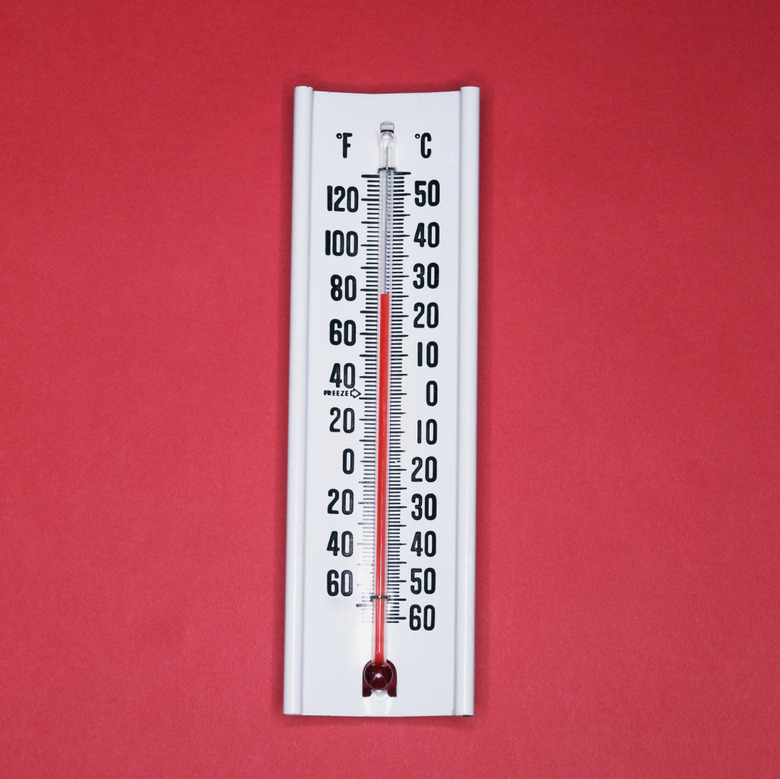The Reason For Incubating At Different Temperatures In Microbiology
Temperature changes can have dramatic effects on microscopic life forms. Scientists incubate microbes at different temperatures for several reasons. One reason is that different microbes grow best at different temperatures. A second reason is that the scientist is trying to generate a temperature-sensitive mutant so that she can generate a mutated protein that can be easily turned off via changes in temperature. A third reason is that the scientist is activating the temperature-sensitive protein so that she can study the effects of the inactivated or activated protein.
Optimal Growth Conditions
Optimal Growth Conditions
Different bacteria like to grow at different temperatures. Thus, a microbiologist will incubate a particular strain of bacteria at its optimal temperature so that he can study it when it is healthy. By changing the temperature, he can study the bacteria while they are stressed. Organisms that grow best at human body temperature, which is approximately 37 degrees Celsius (98.6 degrees Fahrenheit), are called mesophiles. Those that grow in hot temperatures between 40 to 70 degrees Celsius (104 to 158 degrees Fahrenheit) are called thermophiles. Those that grow at hot temperatures above 80 degrees Celsius are hyperthermophiles. Those that live in very cold conditions are called psychrophiles.
Transformation
Transformation
Transformation is the process by which bacteria take up pieces of DNA from the environment. Transformation naturally happens, but can be sped up in the laboratory. The exact way by which DNA is taken up into a bacterial cell is unknown, but it is believed that the calcium ions in the solution mediate interactions between negatively charged DNA and the negatively charged surface of cell membranes. Heating the mixture of bacteria, calcium, and DNA helps improve the process of transformation.
Generating Temperature-Sensitive Mutants
Generating Temperature-Sensitive Mutants
Microbiologists and geneticists discover new functions of the genes in a microscopic organism by generating temperature-sensitive mutants. The researcher exposes microorganisms, such as bacteria, to a chemical agent that causes DNA damage, which can lead to mutated genes. They then grow different batches of these bacteria at different temperatures outside the bacteria's optimal temperature. A batch of treated bacteria that dies or thrives at a non-optimal temperature likely harbors a mutated gene. By studying what inside the temperature-sensitive bacteria has changed, they can learn about a new function of the mutated gene.
Activating Temperature-Sensitive Mutants
Activating Temperature-Sensitive Mutants
Microbes are incubated at different temperatures not just to generate temperature- sensitive mutants but to activate them in experiments that use them to answer a question. Inteins are a stretch of amino acids in an inactive protein. Inteins can cut themselves out of the protein, which activates that protein. Because inteins fuse the loose ends that result after cutting themselves out, they leave no trace that they were there. Inteins have become useful in studying bacteria and yeast, since each intein only cuts itself out when the organism is heated to a certain temperature. Thus, microbes are incubated at different temperatures to activate inteins.
References
- Online Textbook of Bacteriology: The Effect of Temperature on Growth
- JOVE: Bacterial Transformation: The Heat Shock Method
- Methods in Enzymology: Making Temperature-Sensitive Mutants
- Methods in Molecular Biology: EMS Screens: From Mutagenesis to Screening and Mapping.
- Genetics: Temperature Sensitive Mutations Made EasyTemperature-Sensitive Mutations Made Easy: Generating
Cite This Article
MLA
Ph.D., David H. Nguyen,. "The Reason For Incubating At Different Temperatures In Microbiology" sciencing.com, https://www.sciencing.com/reason-incubating-different-temperatures-microbiology-19632/. 24 April 2017.
APA
Ph.D., David H. Nguyen,. (2017, April 24). The Reason For Incubating At Different Temperatures In Microbiology. sciencing.com. Retrieved from https://www.sciencing.com/reason-incubating-different-temperatures-microbiology-19632/
Chicago
Ph.D., David H. Nguyen,. The Reason For Incubating At Different Temperatures In Microbiology last modified August 30, 2022. https://www.sciencing.com/reason-incubating-different-temperatures-microbiology-19632/
